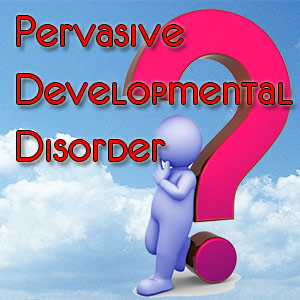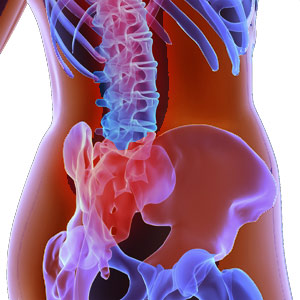Pervasive Development Disorders

The term Pervasive Development Disorders (PDDs) is an umbrella term used to refer to a group of developmental disorders of the brain function. These cover the whole family of autistic spectrum including Asperger syndrome, Heeler's syndrome and Rett disorder. As PDD covers such a wide spectrum, it is exhibited differently from child to child.
Children with these disorders are often confused in their thinking and they have problems understanding the world around them. Since these conditions are identified in children around 3 years of age, which is a critical period in the child's development, they are called development disorders. Even if the condition begins earlier than 3 years of age, parents often do not notice the problem until the child is a toddler who is not walking, talking or developing as well as other kids of the same age.
General signs and symptoms of PDDs
PDD is commonly identified in toddlers and mostly boys from 18-30 months of age:
-
Regression of early speech /absence or delay of speech development.
-
Difficulty in oral communications and problems in using/understanding language.
-
Lack of normal interest in other children or adults.
-
Difficulty in social interactions and relating to people to his/her surroundings.
-
Lining up toys without any awareness of what the toys represent.
-
No pretend play like normal children. For instance, they do not play on the telephone which is a natural in the development of any normal child.
-
Difficulty even adjusting to routine and familiar surroundings.
-
Sensitive to some noises and seem not to hear others.
-
Temper tantrums and aggressive behavior.
-
Anxiety, nervousness, fearfulness, and shyness.
-
Repetitive bodily movements and stereotypic behaviors such as banging head, hand flapping, spinning in circles etc
-
Decreased need for sleep and frequent awakening at nights.
-
Hypnotic, clumsy and often walks on toes.
-
Classic autism is presented by severe qualitative deficits in social interaction, language communication and play.
-
Autistic infants are uncomfortable with physical contact; avoid eye contact including with parents.
-
Preoccupation with repetitive movements and lights, moving objects.
-
Symptoms of Asperger's disorder include curiosity about environment, stereotyped patterns of behavior and strange routines and rituals,
-
Children experiencing childhood disintegrative disorder become anxious, irritable, negative and disobedient with frequent temper tantrums and outbursts for no apparent reason.
Causes for pervasive developmental disorders
While researchers are looking for answers to PPDs, some studies suggest that this is a problem of the nervous system, brain and spinal cord. Secondary causes include prenatal difficulties, phenylketonuria, viral encephalitis etc.
There are five types of pervasive development disorders which include:
Autism: with children having problems in social interactions, pretend play and communication. They exhibit a limited range of activities and interest and nearly 75% of children with autism also have some degree of mental retardation.
Asperger's syndrome children have difficulty with social interaction and communication and also have narrow range of interests. These children, however, have average and above average intelligence, and they develop normally in areas of language and cognition. They have difficulty in concentration and have poor coordination.
Rett's syndrome children present symptoms of associated PDD and suffer from problems of physical development such as motor or movement skills, difficulty in walking and use of their hands and poor coordination. This syndrome almost always affects girls as it is linked with X chromosome.
Childhood disintegrative disorder is a rare condition and children with this disorder begin their development normally in physical and mental areas. A child with this disorder tends to lose many of the skills between 2 and 10 years of age. In addition to the loss of social and language skills, the child may lose control of other functions including bowel and bladder control.
Pervasive development disorder not otherwise specified category is used to refer to children who exhibit severe problems in communication and play.
Diagnosis
Much of the diagnosis depends on the accurate developmental history and evaluation of the current functioning of the child. Complete medical history and physical exam is done for a complete evaluation by doctors. Although there are no laboratory diagnosis in PDD, various blood tests and X rays are done to determine if there is a physical disorder causing these symptoms.
In the absence of any physical disorder, the child is referred to a specialist in childhood development disorders such as psychiatrist or psychologist, pediatric neurologist or other professionals trained to treat PDDs.
Inputs from the parents of the affected child, his/her teachers, and other adults who are familiar to the child are sought. Parents require ongoing counseling and support and they must understand that they are not responsible for the child's condition.
It is estimated that PDD occurs in occur in about 5 -15 children per 10,000 births. It is more common in boys than in girls with the exception of the Rett's syndrome which occurs in girls.
Treatment
Treatment for PDDs depends much on the specific needs of the affected child. Hence, treatment styles and plan of therapy differ. Ideally, a treatment plan will address the child's specific needs in mind and also will address the child's needs at home and at school. Such specific treatment for PDD is based on:
-
The child's age, overall health
-
Medical history
-
Extent and type of disorder
-
Child's tolerance for specific medications and therapies
-
Parent's opinions and preferences.
Sometimes multidisciplinary treatment approaches are utilized as needed to address the individual needs of each child. Such treatment included speech therapy, occupational therapy and training in social skills and behavioral therapy.
Specialized behavioral and educational programs, behavioral techniques, are adopted. Some PDD children may require specialized classrooms which are highly structural and provide attention to child's specific academic needs. Special education structured to meet the child's unique needs should be planned. Strategies for supporting positive behavior of the child are planned.
Intervention planning should be a cooperative effort of parents, healthcare providers and teachers. Better socializing and communication and reduced behaviors that can interfere with learning and functioning should be planned. Speech, physical and occupational therapies are designed to increase the child's functional abilities. There are no drugs to treat PDD and medications can be used to treat specific symptoms such as anxiety, hyperactivity and behavior that may result in injury.
Top of the Page: Pervasive Development Disorders
Tags:#Pervasive developmental disorder
Stress and Brain Damage
Lewy Body Dementia
Pervasive Development Disorders
Sinus Infection
Computer Vision Syndrome
Lasik Eye Surgery
Xerophthalmia
Dry Eye Syndrome
Peripheral Neuropathy
Cerebral Palsy
Migraine Headache Symptom
Low Blood Sugar Headache
Dizzy Spells
Tinnitus
Oral Hygiene
Halitosis
Treatment for Gingivitis
Neck Pain Causes
Whiplash Injury
Other health topics in TargetWoman Women Health section:
General Women Health

Women Health Tips - Women Health - key to understanding your health ...
Cardiac Care
Women's Heart Attack Symptoms - Identify heart problems...
Skin Diseases
Stress Hives - Red itchy spots ...
Women Disorders
Endocrine Disorder - Play a key role in overall wellbeing ...
Women's Reproductive Health
Testosterone Cream for Women - Hormone replacement option ...
Pregnancy
Pregnancy - Regulate your lifestyle to accommodate the needs of pregnancy ...
Head and Face
Sinus Infection - Nearly 1 of every 7 Americans suffer from ....
Women and Bone Care

Slipped Disc - Prevent injury, reduce pain ...
Menstrual Disorders
Enlarged Uterus - Uterus larger than normal size ...
Female Urinary Problems
Bladder Problems in Women - Treatable and curable ...
Gastrointestinal Disorders
Causes of Stomach Ulcers - Burning feeling in the gut ...
Respiratory Disorders
Lung function Test - How well do you breathe ...
Sleep Management

Insomnia and Weight Gain - Sleep it off ...
Psychological Disorders in Women
Mood swings and women - Not going crazy ...
Supplements for Women
Women's Vitamins - Wellness needs...
Natural Remedies

Natural Diuretic - Flush out toxins ...
Alternative Therapy
Acupuncture Point - Feel the pins and needles ...
Top of the Page: Pervasive Development Disorders
Popularity Index: 101,012

